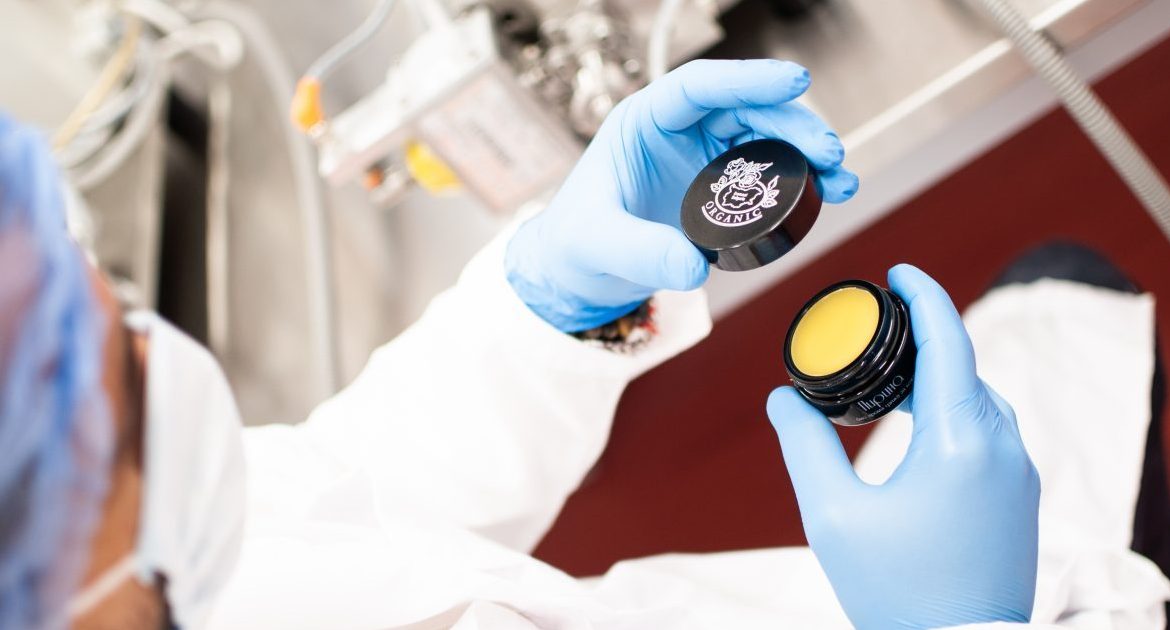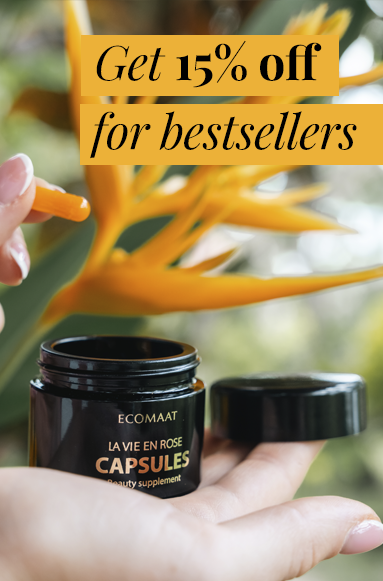
It’s no secret that the cosmetics industry is one of the most aggressively advertised. Big manufacturers convince us daily that we need loads of products and promise us eternal youth and beauty. Wrinkle-free skin after 2 weeks, shiny, long and thick hair after the first wash, etc. The truth is, we don’t need all of these products to keep our skin healthy and fresh. The laboratories of cosmetic concerns are in constant competition and create new formulas and products with which to tempt us consumers. Advertisements create a constant need to buy more and more with the illusion that we will become more beautiful and happy.
However, the truth is a little different. In practice, it doesn’t really matter how many different products we use. And the price does not guarantee the fantastic result we expect. The important questions to ask ourselves are:
1. What does my cosmetics contain and are there any harmful ingredients?
2. What are the benefits for my skin and how does it absorb the active ingredients included in the product formula?
Because even the most expensive cosmetics can include ingredients that are proven to be harmful. On the other hand, depending on the formula of the products and the type of active ingredients – their absorption and penetration into the layers of the skin can be far from effective.
What does my cosmetics contain?
In the mass case, cosmetic creams contain up to 80% water and a mixture of active substances (several percent), plus unnecessary for the skin, low-value synthetic substances such as emulsifiers, preservatives, dyes, stabilizers, and artificial fragrances.
CREAM = WATER + ACTIVE INGREDIENTS
An emulsifier is added to mix the water with the active substances. In order for the emulsion to remain stable over time, a stabilizer is added; because of the water content, which is a potential environment for the development of microorganisms, a preservative is included in the composition of the cream; masking agents and perfume are added for fragrance.
According to the function of the cosmetic product, its formula includes: glycerin, hyaluronic acid, peptides, ceramides, retinoids, vitamins, trace elements, plant extracts, etc. The list of ingredients, formulas and products is endless, but when choosing cosmetics it is important to know what it contains and how it would affect our skin in the long term.
The topic of ingredients in cosmetics is vast, but increasingly relevant and regulated. The truth is that white cosmetics, regardless of whether they are luxurious or not, contain a diverse cocktail of synthetic ingredients, some of which have proven harmful effects.
In the month of June this year, the media published materials that cosmetic giants are quietly stopping the use of talc in their products, due to the thousands of lawsuits related to claims of its carcinogenic effect.
“Talc is sometimes found in asbestos, which is known to be a potent carcinogen, but for decades it has been used in cosmetics because it absorbs moisture, softens the skin and prevents makeup from drying and cracking.” – according to material of Dnevnik.
So, blinded by beautiful bottles, expensive fragrances, and beautiful promises of advertisements, we forget to consider the most important thing – what our cosmetics contain and how it affects us.
How do I navigate the endless list of ingredients?
There are organizations that work for the cause – life without chemicals and less toxic substances. Some of them offer websites or mobile applications where you can relatively quickly check what each ingredient means, how it works and what are the possible negative effects of long-term use.
On the website ewg.org you can check an ingredient, product or brand – there is detailed information about the content of cosmetic products, as well as how beneficial/harmful their effects are. Here is a result of an anti-aging product of one of the most popular cosmetic brands that we searched for:
From the graphs, we can see that the flavoring ingredients in this product are the most harmful. Synthetic fragrances in cosmetics, as attractive as they are and make us feel good when applying the cream, have actually been proven to cause irritation and allergies. It is no coincidence that the dermatological cosmetics sold in pharmacies are delicate and necessarily fragrance-free when they are intended for sensitive skin.
How does cosmetics work?
To understand how cosmetics work, it’s essential to have a clear understanding of the nature of skin. For those who are more curious, we’d like to explain:
How is skin structured?
The skin has three main layers – epidermis, dermis and hypodermis. The surface layer has the most important role in terms of protection from external climatic factors and from harmful chemical and irritating ingredients.
Epidermis – is made up of five sub-layers, the outermost being the stratum corneum. It consists of horn cells, devoid of cytoplasm, filled with keratin, a wax-like solid that acts as a glue for the skin. This layer is resistant to water and acidic solutions, but because it contains waxes it is naturally permeable to lipids and small molecule substances. Below the stratum corneum there are four more layers that contain living cells, the last of which is the basement membrane, in which melanocytes are also found – the cells that produce the pigment melanin.
Dermis – this is the actual skin, made up of connective tissue – collagen and elastin fibers, which, as a scaffolding, support the elasticity and structure of the skin. It is made of living cells and a matrix of elastin and collagen.
Hypodermis – is mainly composed of adipose tissue.
For the conventional cosmetics industry, it is precisely the epidermis that is of greatest interest, because in practice “white” cosmetics can mainly reach this layer. The effect achieved by the use of a cream at this level is to protect the surface layer from water evaporation, to thicken and thicken (increase turgor), which gives the skin a fresh, smooth, and taut appearance. To erase fine lines and create a feeling of radiant skin.
But what is the long-term effect on the skin? Isn’t this just a false sense of hydration and comfort created by the product? And after washing it, does the skin look like this again?
The answer is NO, and there is an explanation for that. The problem is that water, as the main ingredient in creams, cannot reach the dermis, where the processes that really change the appearance of the skin are stimulated. The protective surface layer, similar to a sticky-fatty barrier formed by lipids, can be crossed by a small molecule substance that is lipidic or lipophilic, that is, able to attract lipids and be fat soluble.
A solution to this problem is essential oils, which provide the active ingredients in natural cosmetics. It should be noted that not all cosmetics marked as natural are natural, but this is a topic we will further explore.
How do essential oils work?
While essential oils are categorized as ethers, they do not consist of lipids and are not fatty; rather, they exhibit lipophilic properties and are soluble in fats. To be applied to the skin, essential oils must be dissolved in plant lipids. And so we get a working and effective skin care solution.
Essential oils are organic compounds, that is, they are alive. They are composed of chemical compounds of the elements carbon, hydrogen, oxygen and, in rare cases, sulfur and nitrogen. These are the so-called hydrocarbons (monoterpenes and sesquiterpenes), alcohols (monoterpenols, sesquiterpenols and diterpenols), aldehydes, esters, ketones and phenols.
The therapeutic active components of the oils, which in relation to which oil predominate, can act in many directions including antiseptic, antibacterial, anti-inflammatory, antispasmodic, immunostimulating, balancing the endocrine system, etc.
When inhaled, they affect all levels of stress and directly affect the nervous system, which coordinates many of the processes in the skin. Through the sense of smell, the aromas also reach the lungs, where the blood is enriched with oxygen and enter the blood indirectly.
Explore and learn more about essential oils >
Natural vs. Synthetic Active Ingredients – What’s the Difference?
Using completely natural, high-quality products with a guaranteed composition, you get real efficiency, results and the desired effect of the active ingredients on the skin in a cosmetic aspect. The natural ingredients and molecules in the content of 100% natural organic products are perfectly absorbed by the skin, act at the cellular level (because they are lipid-soluble and are recognized by the cell membranes) and stimulate the body’s internal resources. Thus, they assist in synthesizing the necessary substances to restore balance, hydration, regulation of secretion and other skin functions. At the same time, entering through the skin into the bloodstream, they affect both the functioning of internal organs and on a psycho-emotional level.
Synthetic substitutes
The development of modern technologies and modern frameworks in cosmetics in terms of naturalness and purity has increased the interest in essential oils and plants. Scientists are looking for the “active ingredient” responsible for the effect of the whole plant. They seek to synthesize this single molecule artificially so that they don’t have to use the whole plant as a source. In this way, they create a completely new molecule that has nothing to do with the plant.
Now imagine the diversity of all those chemical compounds in one plant turned into an essential oil, complementing each other and working in synergy. Of course, the balance of all these organic compounds created in the plant will help the body to accept, recognize, and metabolize them much more easily than artificially created and already inorganic ingredients.
How our body perceives synthetic substitutes
The dose of the combination of active substances in the whole plant is smaller than the single highly concentrated dose that can be found in the active ingredient of a given cosmetic product. This also explains why essential oils as a product of plant origin are safer and the effect of their application may take longer than their synthetic counterparts.
Our bodies are wired to recognize and metabolize only organic components with familiar molecular structures. What does it mean for the body to metabolize? Any “foreign” substance or product component that enters the body must be broken down into small cell-friendly “particles.” The body also has its own way of recognizing what is useful for it and what is not. In this way, the useful from the broken down small particles is determined as appropriate, and what is not useful is filtered out and determined as toxic. These are the two main processes in the body – metabolism and detoxification.
Aromatherapy as a holistic approach
With completely natural cosmetic products, the cosmetic effect is achieved with the application of essential oils dissolved in vegetable lipids, which again acts on many levels. They nourish and build the broken lipid barrier, naturally helping the skin to cope with water loss on its own. In addition, vegetable oils supply the skin with unsaturated fatty acids, vitamin A and vitamin E, as essential antioxidants that fight the aging process in it. They strengthen the epithelium and make the skin more resistant to external climatic factors, they also normalize the absorption of vitamin D, which, again due to unsuitable products, is in short supply in many people.
The idea behind the development of our SPA MAAT face and body oils – is exactly this – effective action on all levels. We achieve this with precisely selected, self-produced essential oils, dissolved in a rich base of vegetable oils.
The selection and matching of products is a process that requires knowledge, thoroughness and experience. As already mentioned, the natural cosmetic product label is not enough by itself and cannot always be relied on.
Learn more about SPA MAAT face and body oils here >
Aromatherapy is a holistic approach, affecting the whole body and no single organ should be considered as an independent part. Aroma oils have a therapeutic effect and really support the natural processes of both the skin and the whole body.
For even more effective hydration, use the aroma oils with appropriate floral water. Apply it immediately before the oil product and emulsify manually, directly on the skin.
Explore the floral waters >
In conclusion
Completely natural, high-quality Bio cosmetic products are beneficial for skin and health, as:
1. They do not contain bad or toxic substances that might have harmful long-term effects.
2. Organic substances are perceived much better by the skin and work effectively, being able to penetrate deeper than the surface layers.
In this way, they manage to hydrate effectively, which is the most important function of cosmetics, while delivering a rich cocktail of beneficial substances that protect and support skin regeneration. An approach that does not require the use of any apparatus or aggressive, painful procedures for the active ingredients to penetrate deeper. Simply pure and high-quality natural ingredients that our skin perceives quite naturally, and the effect, especially in the long term, is tangible – healthy, clean, and beautiful skin.
And one more detail that we cannot ignore – bio cosmetic products are extremely ecological (100% high-class natural products are stored in glass, and plastic packaging is not an option), which is important for the protection of nature, health and our lives in the long term.
Therefore – choose wisely, make informed decisions, and consider the impact of the products you use in the long-term aspect, with health, beauty, and the world we live in mind.
In case you have any questions about the products and how to use them – we will be happy to answer at hello@ecomaat.eu or on our FB page.




